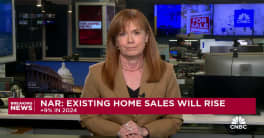The nation's shadow inventory dropped to 2.3 million housing units in July, down 10.2 percent from where it stood one year earlier. According to CoreLogic's report on the subject, released this morning, in the same month in 2011 the inventory was 2.6 million units. The dollar volume of the inventory in the most recent month was $382 billion compared to $397 billion the year before. The shadow inventory has now returned to the approximate level of March 2009. The current inventory represents a 6.3 month supply.
CoreLogic estimates the current stock of properties in the shadow inventory or pending supply by calculating the number of properties that are seriously delinquent, in foreclosure, or held as real estate owned (REO) by banks by not currently listed by multiple listing services.
The July inventory represented just over three-fourths of the 2.7 million properties that were seriously delinquent, in foreclosure or in bank-owned inventories (REO) at the time the data was compiled. Currently the flow of new seriously delinquent (90+ days) into the shadow inventory has been roughly offset by sales of REO and short sales.
Properties that are already in REO in July totaled 345,000 or 15 percent of the inventory and represent a 1.0 month supply at the current rate of absorption. There were 1 million seriously delinquent loans, a 2.9 month supply. Properties in some state of foreclosure numbered 900,000, a 2.5 month supply.
Seriously delinquent loans are the main driver of the shadow inventory and between April and July this number declined substantially in a number of states. These delinquencies were down 3.2 percent in Arizona, 2.8 percent in Pennsylvania, 2.3 percent in New Jersey and 2.2 percent in both Delaware and Maine.
Roll rates are the transition rates of loans from one state of performance to the next. CoreLogic said that, beginning with this report, cure rates are factored in as well to capture the rise in foreclosure timelines and further enhance the accuracy of the shadow inventory analysis.
Transition rates of "delinquency to foreclosure" and "foreclosure to REO" are used to identify the currently distressed non-listed properties most likely to become REO properties.

Anand Nallathambi, president and CEO of CoreLogic commented, "Broadly speaking, the shadow inventory continued to shrink in July. The reduction is being driven by a variety of resolution approaches. This is yet another hopeful sign that the housing market is slowly healing."
"The decline in shadow inventory has recently moderated reflecting the lower outflow of distressed sales over the past year," Mark Fleming, CoreLogic's chief economist said. "While a lower outflow of distressed sales helps alleviate downward home price pressure, long foreclosure timelines in some parts of the country causes these pools of shadow inventory to remain in limbo for an extended period of time."
As of July 2012, Florida, California, Illinois, New York and New Jersey make up 45 percent of all distressed properties in the country.








